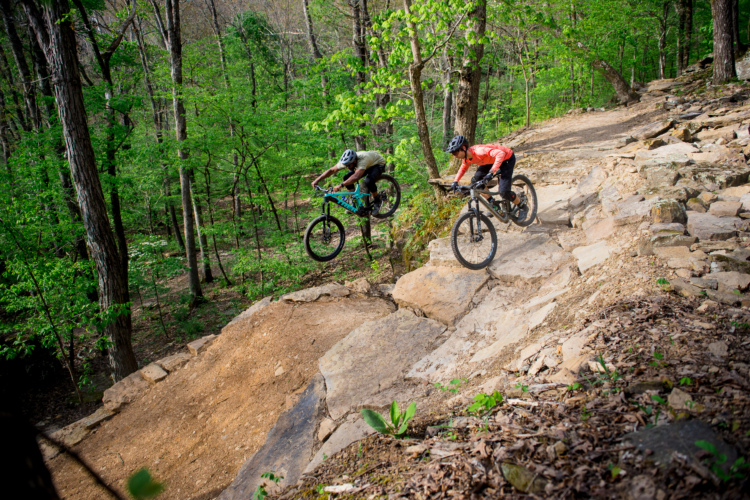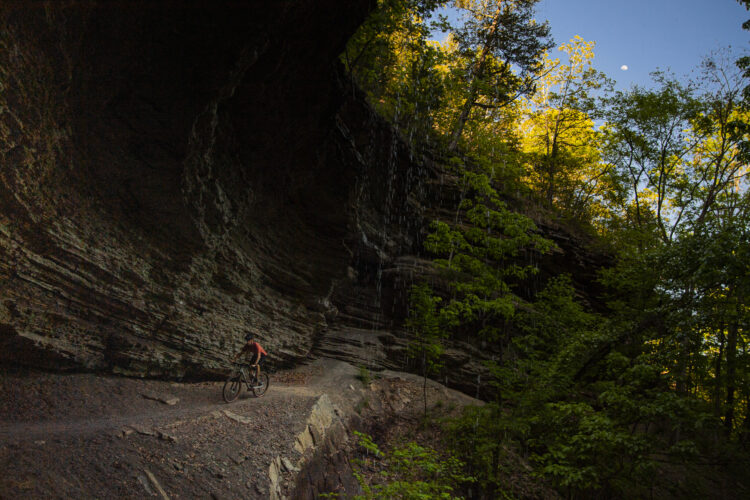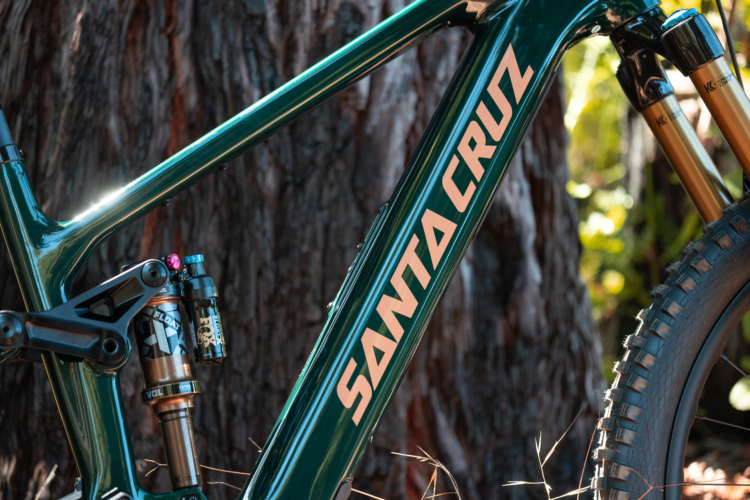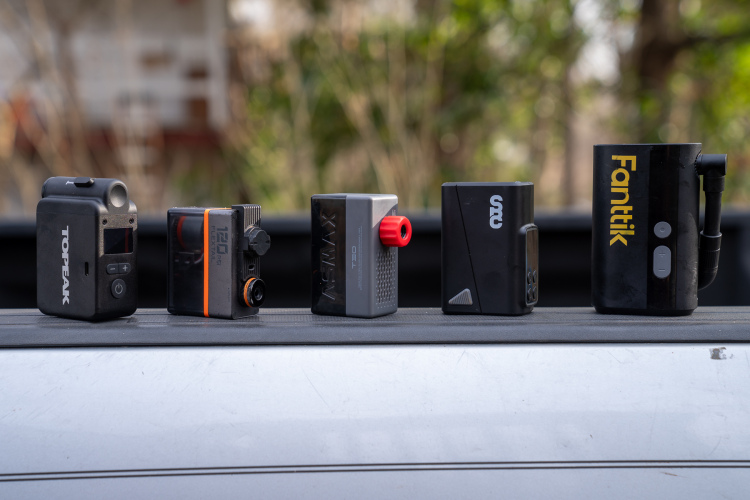
Attributing the meteoric rise of Arkansas as a mountain bike destination to simply “The Waltons” is a gross oversimplification. Yes, Walton money seems to end up connected to almost everything recreation-related in Arkansas in one way or another (you just have to keep digging). But it takes a lot more than one family of billionaires to make a mountain bike scene. In fact, a broad array of factors have all coalesced in Arkansas to make this world-class mountain bike destination a reality.
And one of the most important ingredients is the Arkansas State Parks Department.

The birth of mountain biking in Arkansas, and Monument Trails
To trace the importance of the State Parks Department in the Arkansas mountain bike scene, we have to rewind the clock to the dawn of the sport. Way back in the late 80s, the first official mountain bike trail in the state—Fossil Flats—was built in Devil’s Den State Park by a forward-thinking parks employee named Tim Scott. Scott went on to found the Ozark Mountain Bike Festival in 1989 at Devil’s Den, and the festival continues to this day
During the recent trail building boom in Northwest Arkansas, Gary Vernon—one of the key visionaries behind Bentonville’s trails—and the Walton brothers wanted to build “a collection of world-class, mountain biking destinations within Arkansas State Parks,” and so the Monument Trails project was born. Currently, there are Monument Trails in four Arkansas State Parks: Devil’s Den, Hobbs, Pinnacle Mountain, and Mount Nebo.
The Monument Trails are now widely regarded as the best trails in the state. I’ve only ridden two of these four parks—Devil’s Den and Hobbs—and Devil’s Den is by far my favorite trail in Arkansas. However, Mount Nebo is quickly becoming one of the most famous trails in Arkansas, thanks to its spectacular views and raw, technical downhills. The challenging trails of Mount Nebo have even been deemed gnarly enough to host a round of the Big Mountain Enduro series.

The Arkansas State Parks Department is all about recreation and tourism.
Fossil Flats and the Monument Trails are far from new news, but the Arkansas State Parks Department has a much bigger hand in today’s mountain bike trail development than many people may realize.
The Arkansas State Parks Department falls under the greater tourism umbrella within the Arkansas state government, and that has enabled the parks department to invest in mountain biking. While on the surface the state’s org chart might seem inconsequential, Shea Lewis, Director of Arkansas State Parks and Secretary of the Arkansas Department of Parks, Heritage, and Tourism, assured me that this is a critical distinction. In many other states, the State Parks system will fall under the Department of Natural Resources (like my birth state of Wisconsin) or under a branch of the government such as Parks and Wildlife (like my home state of Colorado).
In org charts such as those, recreation—and mountain biking especially—is often an overlooked use case. While Colorado is currently making strides to expand mountain bike access in some state parks, Colorado Parks and Wildlife (CPW) is notorious for opposing mountain bike trail development all across the state. I’ve spoken with and interviewed mountain bike associations in all corners of Colorado who have expressed utter exasperation with the CPW. However, the CPW is currently the primary branch through which the State of Colorado funds trail development via nonmotorized trail grants, so there’s some yin and yang in this relationship.
Arkansas State Parks, on the other hand, is absolutely recreation-first, thanks to their connection to the tourism agency.

Arkansas State Parks is well-funded: $167.5 million in fiscal year 2023
In a nationwide conservation landscape that seems perpetually underfunded, the Arkansas State Park system is very well funded by a conservation tax. According to Shealyn Sowers, Chief of Communications for the Arkansas Department of Parks, the conservation tax was originally passed in 1996. “It designates 1/8th of 1 percent of the state’s general sales tax for the Arkansas Game and Fish Commission (45 percent), Arkansas State Parks (45 percent), Arkansas Heritage Commission (9 percent) and Keep Arkansas Beautiful Commission (1 percent),” said Sowers.
However, according to my research, the general sales tax is just one funding source of many for the State Parks Department. In total, the Parks, Heritage, and Tourism Division was funded to the tune of $167.5 million in fiscal year 2023. There are several line items in the total budget that could apply to outdoor recreation, but the appropriation “for the personal services and operating expenses of the Central Administration, Tourism (including Great River Road), and Parks (including Museum Services) Divisions of the Department of Parks and Tourism” totaled $20.6 million for fiscal year 2023.
While this might seem dry on the surface, what it means in actual practice is that the State Parks Department is a well-funded line item in the state budget that’s directly connected to the state’s sales tax. Contrast this with California State Parks, which have been closed in the past due to lack of funding, and the US Forest Service, which has a deferred trail maintenance backlog measuring in the billions of dollars due to consistent underfunding.

The State Parks Department is “in an expansion phase”
With a focus on tourism, a mountain bike boom is happening in the state, and with a consistent revenue flow, the Arkansas State Parks Department is currently “in an expansion phase,” according to Lewis. However, the state doesn’t necessarily have more land lying around to build new parks on. Instead, the Arkansas State Parks Department often leases land from the US Forest Service to manage as State Parks.
Take the Trails at Mena project, for example. The primary permittee on the project is the Arkansas State Parks Department, but the vast majority of the land in the NEPA assessment—8,832 acres—is actually Ouachita National Forest land. Through the NEPA process, “Arkansas State Parks would receive a permit from the US Forest Service for a lease of a portion of this land,” said Lewis.
I was honestly surprised to learn that this type of lease agreement is quite common, especially in Arkansas. Normally when I’ve driven into a state park, I generally assumed that I was riding on state-owned land—but in actual fact, I could have been on federal land that was leased and managed by the state. But when you think about the lack of funding and conflicting priorities that federal agencies have to deal with, it begins to make a bit more sense.
“One of the things that we’re really good at is providing recreational opportunities—managing recreation—as well as hospitality and overnight facilities,” said Lewis. “So we often try to partner with agencies like the Forest Service. Their priority is to maintain the forest, the health of the forest, the natural resources, and things like that. We trust them in their expertise in that area. And they trust us in these types of areas to provide quality recreational experiences, overnight lodging—whether that’s camping, cabins, food service, and things like that.”
The expansion of Queen Wilhelmina State Park through this NEPA study would not be the first time that Arkansas State Parks has leased land from the USFS. In addition, many of their State Parks are leased from the US Army Corps of Engineers.
“If you think about ski areas all across the West, most of those are on national forests, but it’s a permit that a private company gets or municipality gets for the operation of those recreational and hospitality facilities,” said Lewis. In cases like this one, it’s simply a state agency applying for the lease instead of a private company.

Thinking win-win-win
This collaboration between the state and the federal government seems like a massive win-win-win for everyone involved. While in a perfect world perhaps the USFS would be well funded enough to provide all of these recreational opportunities on its own, the collaboration between Arkansas and the USFS appears to work out well for both of these agencies.
But the third “win”? The third group winning in all of this is the mountain bikers, hikers, trail runners, and other constituents who get to enjoy the superb, world-class singletrack trails that Arkansas is building in their gorgeous state parks!











2 Comments
Jul 2, 2024
Jul 7, 2024